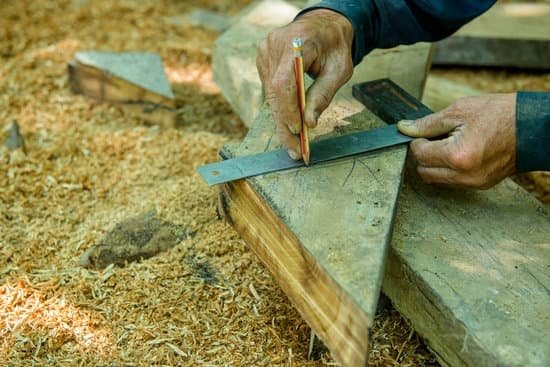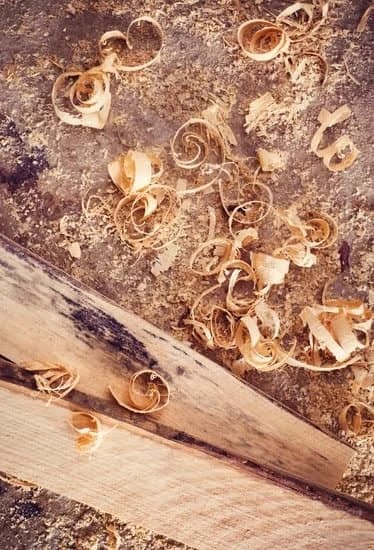Woodworking is a time-honored craft that has been practiced for centuries, producing functional and aesthetically pleasing wooden creations. At the heart of woodworking lies the skillful art of joinery, which involves connecting individual wood pieces to create structurally sound and durable joints. In this blog post, we will delve into the world of woodworking and explore the role of a joiner in ensuring the quality and functionality of wooden creations.
Woodworking encompasses a wide range of industries, including furniture making, cabinetry, architectural millwork, and even artisan crafts. It is both a practical trade and an artistic pursuit, requiring precision, attention to detail, and a deep understanding of various woodworking techniques. The purpose of this blog post is to shed light on what it means to be a joiner in woodworking – someone who specializes in creating strong connections between wood pieces.
A joiner plays a crucial role in woodworking by employing various joinery techniques to achieve seamless joint connections. Whether it’s constructing dovetail joints for drawers, mortise and tenon joints for frames, or finger joints for boxes – joiners hold the key to producing durable wooden structures.
By having a comprehensive understanding of different wood types and their characteristics, joiners are able to select appropriate materials that complement specific projects. They also rely on specialized tools and equipment to accurately measure, cut, shape, and connect wood pieces effectively.
As we dive deeper into this blog post, we will explore not only what it takes to become a skilled joiner but also why proper joinery techniques are crucial in woodworking projects. From ensuring structural integrity to enhancing aesthetics and ensuring longevity, joining wood pieces correctly can make all the difference in creating masterful works of art or functional furniture pieces that stand the test of time.
Additionally, we will address common challenges faced by joiners and provide effective solutions to overcome them.
The Fundamentals of Woodworking
Woodworking is a versatile craft that has been practiced for centuries. It involves the shaping, cutting, and joining of wood to create both functional and decorative objects. Woodworking is an essential skill in various industries, including construction, furniture making, cabinetry, and interior design. Understanding the fundamentals of woodworking is crucial in order to appreciate the role of a joiner and their contribution to creating sturdy and visually appealing wooden structures.
The art of woodworking dates back thousands of years, with evidence of early woodworking found in ancient Egyptian tombs and Roman furniture. Over time, woodworking techniques have evolved and developed, resulting in a wide variety of joinery methods that serve different purposes. Joinery refers to the process of connecting two or more pieces of wood together to form a strong joint.
Joiners play a critical role in creating these joints by using specialized techniques such as dovetailing, mortise and tenon joints, finger joints, among others. These techniques require precision and skill to ensure a secure connection between wood pieces. For example, dovetail joints are known for their interlocking pattern which provides excellent strength and durability, making them commonly used in drawer construction.
In addition to their knowledge of joinery techniques, joiners rely on a range of tools and equipment specific to their trade. These tools include saws for cutting wood accurately, chisels for shaping wood surfaces, planes for smoothing rough edges, drills for creating holes or countersinks, as well as clamps and jigs for securing workpieces during assembly. A joiner’s proficiency in using these tools is essential for achieving precise cuts and seamless connections between wooden elements.
Indeed there’s no doubt about the importance that woodworking plays not only because it serves multiple purposes but also because it celebrates craftsmanship like no other industry; furniture can be constructed building up on specific characteristics each material exhibits itself so now tables cements ability solutions.
| Joinery Technique | Description |
|---|---|
| Dovetail joints | Interlocking pattern known for excellent strength and durability, commonly used in drawer construction. |
| Mortise and tenon joints | A strong joint composed of a square hole (mortise) and a complementary peg (tenon), frequently used in furniture-making. |
| Finger joints | Several interlocking fingers are cut into two workpieces, creating a secure joint ideal for box construction or edge-to-edge connections. |
What is a Joiner?
A joiner is a skilled woodworking professional who specializes in creating strong and durable joints in wooden structures. In the context of woodworking, joinery refers to the techniques and methods used to connect two or more pieces of wood together to form a solid and stable structure. Joiners play a crucial role in ensuring the structural integrity and longevity of wooden creations.
Joiners use various joinery techniques to create different types of joints, depending on the specific requirements of the project. Some common joinery techniques include dovetail joints, mortise and tenon joints, finger joints, and many more. These techniques involve precise measurements, careful cutting, shaping, and assembly of wood pieces to achieve seamless connections.
The primary goal of a joiner is to create joints that are not only strong but also aesthetically pleasing. They strive for precision in their work, ensuring that the joints fit together tightly and seamlessly. This attention to detail not only enhances the functional aspect of the joint but also contributes to the overall visual appeal of the finished product.
| Joinery Technique | Description |
|---|---|
| Dovetail Joint | A strong joint with interlocking wedge-shaped “tails” that fit into corresponding “pins” |
| Mortise and Tenon Joint | A traditional joint consisting of a protruding tenon that fits into a corresponding hole (mortise) |
| Finger Joint | A joint created by interlock finger-like projections on adjoining wood pieces |
To effectively carry out their work, joiners rely on specialized tools and equipment designed for woodworking. These may include hand tools such as chisels, planes, saws, and mallets, as well as power tools like routers, biscuit joiners, and drill presses. These tools enable joiners to accurately measure, cut, shape, and assemble wood pieces with precision.
Becoming a joiner in woodworking requires both training and skill development. Joiners need to have a comprehensive understanding of different wood types and their characteristics to select the appropriate materials for specific projects. They must also possess knowledge of various joinery techniques and be able to apply them effectively.
Joiners serve a vital role in woodworking by ensuring the quality and functionality of wooden creations. Proper joinery techniques are essential for structural integrity, preventing joints from weakening or coming loose over time. Additionally, well-executed joints contribute to the overall aesthetics of wooden structures, enhancing their visual appeal.
In the next section of this blog post, we will explore in more detail the different joinery techniques used by joiners in woodworking. We will discuss their advantages and applications in creating strong and durable joints in wooden structures. Stay tuned.
Joinery Techniques
When it comes to creating strong and durable joints in wooden structures, joinery techniques play a crucial role. Joiners utilize various techniques to connect wood pieces securely and ensure the structural integrity of their creations. In this section, we will delve into some of the most common joinery techniques used by joiners in woodworking.
- Dovetail Joints: Dovetail joints are known for their strength and aesthetic appeal. This technique involves creating interlocking wedge-shaped cuts on opposite ends of two pieces of wood. When fitted together, these cuts create a tight and secure joint that resists pulling apart. Dovetail joints are commonly used in furniture making, particularly for drawers.
- Mortise and Tenon Joints: Mortise and tenon joints are widely used in traditional woodworking due to their strength and versatility. This technique involves cutting a rectangular hole (mortise) in one piece of wood and fitting a corresponding projection (tenon) from another piece of wood into it. Mortise and tenon joints can be further reinforced with glue or dowels for added durability.
- Finger Joints: Finger joints, also known as box joints or comb joints, are ideal for joining boards at right angles to create boxes or frames. This technique involves interlocking multiple rectangular cuts on both pieces of wood, resembling interlocked fingers when assembled together. Finger joints provide excellent strength, stability, and resistance against movement.
- Butt Joints: Butt joints are the simplest form of joinery technique where two wood pieces are joined by simply butting them against each other at a 90-degree angle. While not as strong as other types of joints without additional reinforcement such as screws or nails, butt joints can be bolstered with dowels or biscuits to improve their strength.
These are just a few examples of joinery techniques utilized by professional joiners in woodworking. Each technique has its own strengths and weaknesses, making them suitable for different applications and specific project requirements. By mastering these techniques, joiners can create beautiful and durable wooden structures that stand the test of time.
Tools and Equipment
Joiners rely on a variety of specialized tools and equipment to carry out their work effectively. These tools enable them to accurately measure, cut, shape, and join wood pieces, ensuring precision and quality in their woodworking projects. By understanding the different tools and equipment used by joiners, one can gain insight into the complexity and skill required in this craft.
One essential tool for joiners is the measuring tape or ruler. Joiners must have precise measurements to ensure that wood pieces fit together seamlessly. Without accurate measurements, joints may not align properly, leading to structural weaknesses in the finished piece. Joiners also use marking tools like pencils or marking knives to indicate where cuts should be made and where joints need to be created.
Cutting tools are another crucial aspect of a joiner’s toolkit. Joiners use saws of various types, such as hand saws or power saws, depending on the project requirements. They employ these saws to make precise cuts on wood pieces according to the designated measurements. Additionally, chisels play an important role in shaping and refining joints by removing excess material or achieving clean edges.
In terms of joining wood pieces together, joiners utilize several specialized equipment options. For example, clamps are commonly employed to hold pieces securely during glue-ups until the adhesive dries. Titebond Original Wood Glue is a popular choice among joiners for its strong bond and easy application. Meanwhile, hammer drills may be used when screws or nails are necessary for added reinforcement of joints.
Overall, these tools and equipment enable joiners to execute their woodworking projects with accuracy and efficiency. By having access to a range of measurement tools, cutting tools, shaping tools, and joining equipment, joiners can create strong and durable connections between wooden pieces while maintaining precise execution throughout their craftsmanship process.
Training and Skills
Formal Training
To become a joiner in woodworking, formal training is often necessary. Many vocational schools and trade programs offer specific courses or certifications in woodworking and joinery. These programs provide students with a solid foundation in woodworking techniques, safety protocols, and the proper use of tools and equipment. Additionally, some colleges and universities offer degree programs in fine woodworking, where aspiring joiners can further refine their skills and knowledge.
Knowledge of Wood Types
An essential aspect of becoming a skilled joiner is having a thorough understanding of different wood types and their characteristics. Different woods have varying densities, strengths, grains, and colors, which can affect how they respond to cutting, shaping, and joining processes.
A joiner must be able to identify different wood types accurately and understand their unique properties to select the most suitable materials for specific projects. This knowledge also helps ensure that the joints created by the joiner are strong, durable, and aesthetically pleasing.
Attention to Detail
Precision is paramount for a joiner in woodworking. The ability to pay close attention to detail ensures that joints fit together snugly and seamlessly. Joiners must have an eye for measurements, angles, and symmetry to create precise cuts and accurate joints.
They must also be skilled at interpreting technical drawings or blueprints to determine the dimensions and specifications required for each joint. Additionally, an appreciation for aesthetics is vital as joiners often work on creating visually appealing structures where craftsmanship is showcased.
Problem-Solving Skills
Joiners frequently encounter challenges during the woodworking process that require problem-solving skills. They may need to troubleshoot issues such as misaligned joints or gaps between pieces of wood.
Joiners must possess critical thinking abilities to analyze problems and devise effective solutions-whether it involves adjusting measurements, using specialized tools or employing alternative joinery techniques-to rectify the issue without compromising the integrity of the joint or the overall structure. Adaptability is also crucial as joiners may need to modify their approach or technique based on the specific requirements of each project.
Building a successful career as a joiner in woodworking requires a combination of formal training, hands-on experience, and an inherent passion for the craft. With the right skills and expertise, joiners can contribute to creating stunning wooden structures with durable joints that stand the test of time.
Importance of Joinery in Woodworking
Joinery is a crucial aspect of woodworking that holds immense importance in creating high-quality and durable wooden structures. Proper joinery techniques not only enhance the overall aesthetic appeal of wooden creations but also ensure their structural integrity and longevity. This section will elaborate on the significance of joinery in woodworking, highlighting its impact on structural stability, aesthetics, and the lifespan of wooden projects.
Structural Integrity
One of the primary reasons why proper joinery techniques are essential in woodworking is to achieve structural integrity. Joiners use various joint types, such as dovetail, mortise and tenon, or finger joints, to create strong connections between wood pieces.
These joints distribute weight evenly and prevent any weak points that may compromise the stability of the structure. By utilizing solid joinery techniques, such as gluing and clamping wood pieces together tightly or using reinforcing fasteners like screws or dowels, joiners can ensure that the final product can withstand heavy loads and potential stress over time.
Aesthetics
In addition to providing structural strength, proper joinery techniques contribute significantly to the visual appeal of wooden creations. Skillfully executed joints can add intricate details and decorative elements that enhance the overall design. For example, traditional joinery methods like dovetail joints can create visually captivating patterns that showcase exceptional craftsmanship. Joiners often take great care in choosing appropriate joint styles that complement the design intent while ensuring both functionality and beauty.
Longevity
Quality joinery is essential for enhancing the longevity of wooden projects. Well-constructed joints help withstand natural forces such as weather conditions or wood movement due to changes in humidity levels without causing significant damage or deformation. By understanding different wood characteristics and choosing appropriate joint types accordingly, joiners can mitigate potential issues like splitting or warping over time, thus preserving the durability and lifespan of their creations.
Common Challenges and Solutions
Joiners in woodworking often encounter various challenges during the process of creating strong and durable joints in wooden structures. Three common challenges faced by joiners are wood movement, alignment issues, and achieving seamless joint connections.
One of the primary challenges for joiners is dealing with wood movement. Wood is a natural material that can expand or contract depending on temperature, humidity, and moisture content. This can cause joints to loosen or become misaligned over time.
To overcome this challenge, joiners employ techniques such as allowing for wood movement by using specific joint designs or incorporating expansion gaps in their projects. They also take precautions by accurately measuring the moisture content of the wood before construction and choosing appropriate finishes that help stabilize the wood.
Alignment issues also pose a significant challenge for joiners. When joining different pieces of wood together, it is crucial to ensure precise alignment for a seamless joint. Misalignment can weaken the joint and affect both the aesthetic appeal and structural integrity of the overall piece. Joiners use techniques such as measuring and marking carefully, using clamps and jigs to hold pieces in place during assembly, and utilizing specialized tools like squaring aids and angle guides to achieve accurate alignment.
Achieving seamless joint connections is another key concern for joiners. A strong joint not only ensures structural stability but also enhances the visual appeal of the finished project. Joinery techniques like dovetail joints, mortise and tenon joints, or finger joints require precision cutting, shaping, and fitting to create tight-fitting connections between wood pieces. Joiners often use hand tools like chisels, planes, saws, and routers that allow them to work meticulously with close attention to detail.
Real-Life Examples
Woodworking is a craft that involves creating various objects and structures using wood as the primary material. Joinery, which refers to the practice of connecting and securing different pieces of wood together, plays a crucial role in ensuring the strength, functionality, and aesthetic appeal of these creations. In this section, we will explore some real-life examples of woodworking projects where joinery techniques are showcased to create stunning and intricate designs.
One example of woodworking that highlights the importance of joinery techniques is the creation of intricate furniture pieces. Fine furniture makers often employ advanced joinery methods such as dovetail joints to achieve seamless connections between different sections of a piece.
The craftsmanship involved in crafting these joints not only adds structural integrity but also contributes to the overall beauty and artistry of the furniture. From elegant dovetail drawer joints to sophisticated mortise and tenon connections in chair frames, joiners play a vital role in transforming raw wood into functional and aesthetically pleasing furniture.
In addition to furniture pieces, intricate woodwork structures also demonstrate how joinery techniques can be used effectively. For instance, timber frame construction relies heavily on expertly crafted joints to create durable and robust wooden structures without relying on modern fasteners like nails or screws. Joiners use traditional methods such as mortise and tenon joints or scarf joints to connect beams and posts securely.
These connections allow for the expansion and contraction of wood due to environmental factors while maintaining stability in the structure over time. The precision and skill required by joiners in executing these complex jointing techniques are essential for constructing long-lasting buildings that showcase both function and beauty.
Architectural designs also present opportunities for showcasing the important role played by joiners in woodworking. In many historical buildings or heritage sites, you can find examples of ornate wooden elements such as intricate staircases, decorative moldings, or elaborate door frames.
These architectural details often involve intricate joinery techniques like finger joints or mitered joints to seamlessly connect pieces of wood, enhancing the overall aesthetics of the structures. Joiners must possess a keen eye for detail and precision in order to create these visually striking designs that withstand the test of time.
These real-life examples illustrate how joinery techniques are essential in woodworking projects to create stunning furniture pieces, intricate woodwork structures, and architectural designs. The craftsmanship and expertise of joiners play a crucial role in ensuring the quality, functionality, and longevity of these wooden creations.
By using various forms of joinery such as dovetail joints, mortise and tenon connections, or finger joints, joiners are able to bring out the beauty and strength of wood while contributing to the rich history and legacy of woodworking as a craft.
Conclusion
In conclusion, understanding the role of a joiner in woodworking is crucial for anyone interested in the craft. Throughout this blog post, we have explored the fundamentals of woodworking and defined what a joiner is in this context. Joiners play a significant role in creating strong and durable joints in wooden structures, using various techniques such as dovetail, mortise and tenon, finger joints, and more.
The specialized tools and equipment that joiners utilize are essential for accurate measurements, cutting, shaping, and joining wood pieces effectively. However, becoming a skilled joiner requires training, expertise, and an understanding of different wood types and their characteristics.
Joinery techniques are not just important for aesthetic purposes but also for ensuring structural integrity and longevity of wooden creations. Proper joinery helps overcome challenges such as wood movement and alignment issues while achieving seamless joint connections. Real-life examples of woodworking projects have showcased the vital role that joinery plays in creating intricate furniture pieces or architectural designs.
Frequently Asked Questions
What is the difference between a joiner and a jointer?
The difference between a joiner and a jointer lies in their purpose and functionality. A joiner, also commonly referred to as a biscuit joiner, is a power tool used for creating strong joints in woodworking projects. It cuts slots into wood pieces where biscuits, small wooden discs, can be inserted to ensure stability and strengthen the joint.
On the other hand, a jointer is a different woodworking tool used primarily for flattening and straightening wood surfaces. It employs rotating knives or blades to remove material from the surface of the wood and achieve a smooth, even result.
What does a jointer do to wood?
A jointer is specifically designed to flatten and straighten wood surfaces. When using a jointer, the woodworker feeds the piece of lumber along the infeed table towards rotating blades that are slightly protruding above the outfeed table.
As the wood passes through, these blades shave off any uneven or rough areas from the surface of the board, resulting in a flat and level piece of wood with straight edges. This process is crucial for preparing boards before joining them together or creating precise cuts on another woodworking machine like a table saw.
What is the difference between a planer and a joiner?
While both planers and jointers are commonly used in woodworking, they serve different purposes. A planer is designed to trim down the thickness of wooden boards consistently across their entire surface. This tool uses rotating blades to remove material from one side of the board until it reaches the desired thickness.
In contrast, a jointer focuses on flattening and straightening mainly just one face of a board rather than adjusting its overall thickness. By removing inconsistencies and irregularities from one side, such as warping or cupping, a jointer ensures that subsequent machining processes can be completed accurately with smooth results when using tools like planers or table saws.

Hi everyone! I’m a woodworker and blogger, and this is my woodworking blog. In my blog, I share tips and tricks for woodworkers of all skill levels, as well as project ideas that you can try yourself.





